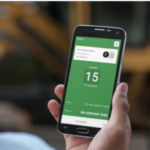There are many design challenges that are universal, that transcend the type of application, industry, or audience you are solving problems for as a product designer. But sometimes certain projects force us to think about very specific and unique challenges that are not found elsewhere.
When working in logistics, and specifically with delivery driver and warehouse associate applications, the most interesting problem/consideration was scanning. Scanning introduces a whole new input method not applicable for many product designers. It can change pretty much everything about how a user might use the application, from how they hold it, to how they process feedback (i.e. they are probably not even looking at it while using it).
Goal
The aim was to take an existing WMS, which was not originally designed for a smartphone form factor and was struggling to fit new features into a confusing IA and make a more seamless part of an associate’s activity. Efficiency is a common goal for most redesigns, but in this space especially where shaving a fraction of a second off of an interaction times thousands of interactions, times hundreds of associates across dozens of facilities can equate to significant cost savings.
We worked closely with real workers at facilities and their managers to understand where deficiencies currently exist, how they leverage workarounds and where there are opportunities to improve UX. The ability to be on a facility floor, conducting time studies, putting prototypes into users’ hands unlocked a lot of ideas and made for an incredibly iterative experience.
Outcomes
Re-designed flows are estimated to cut down on task time, reduce labour costs, and open up additional time for managers and team leads who have to engage with their associates less frequently.

